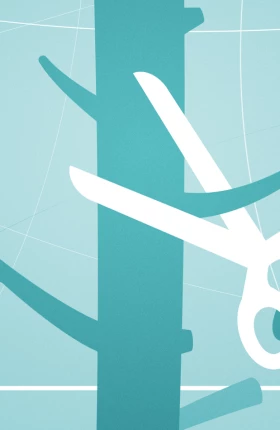BCG has helped many leading companies around the world transform their innovation programs: tightening the link between R&D and strategy, cutting costs, speeding time to market, and—perhaps most important—boosting hit rates. These are particularly satisfying projects for consultants and clients alike because they generate so much value so fast.
Recently, one of our clients told us about a conversation he’d had with a fellow passenger on a flight across Europe. Our client, the CEO of a global automotive-supply company, had enjoyed describing his company’s transformation of its innovation program—and the terrific results it achieved. We’ve taken some artistic liberty in re-creating that conversation here; we hope you will find it relevant to your own innovation efforts.
The passenger in the next seat: Very nice to meet you in person. Your face is familiar to me from that article that ran—was it just last week? I recall that you described your company’s revised approach to product development as an outstanding success. I was really intrigued by that. Why exactly are you so satisfied with the results?
The CEO: Well, we’ve almost doubled our sales across all our product groups—while at the same time cutting our R&D costs by 10 percent. That’s a huge success.
That’s for sure. So how did you achieve those results?
Mainly we took a very systematic, reality-based approach to narrowing our focus. Our goal when we engaged BCG was to define our product portfolio for the next six years. Going into the project, we had 140 ideas for possible new products; clearly we couldn’t develop all of them. After a detailed analysis, BCG recommended that we develop 11 of the 140. Today the demand among our OEM customers for 10 of those 11 products is far higher than we had ever hoped. This kind of R&D hit rate is unbelievable.
Indeed! A lot of companies are lucky to make a success of even one out of ten innovation projects, aren’t they?
Right. And in the automotive supply industry, the success rate is typically in the 30 to 50 percent range. Ten out of 11 is phenomenal. That’s why this approach is so exciting: it literally tripled our hit rate—and remember, we were also cutting our R&D costs by 10 percent.
That’s amazing, all right. But how did you determine which products were going to be winners in the market and which ones may have looked sexy but wouldn’t sell?
That was the revolutionary aspect of this approach: it allowed us to make that distinction on the basis of reality, not hunches. Consider, for example, one of the products we chose to develop: a car key that informs you with the press of a button whether your car’s windows are closed, the doors locked, and the lights off. Many people in management thought this was a gimmick that no consumer would be willing to pay for. The analysis showed otherwise, and it’s been proved right.
If some product ideas were not obvious—and some were even controversial—how did you make the decision to develop them anyway? Wasn’t there a lot of internal resistance?
The deciding factor was the way we and BCG conducted market analysis to find out which product ideas consumers would actually pay for. The results were just so compelling that people across the organization, from R&D and manufacturing to marketing and sales, saw the logic in our choices.
How exactly did you perform that market analysis?
First we conducted eight MindDiscovery workshops in North America, Asia, and Europe to better understand the needs of end customers in each region. MindDiscovery, an approach to market research, uses psychological methods to bring consumers’ deep needs to the surface. Recognizing those needs greatly increases our chances of coming up with product ideas that will appeal to people. We now have a much better understanding of why various consumer segments buy the products they do.
So the MindDiscovery workshops gave rise to a number of hypotheses. For instance, we had a remote-control platform with specialty functions. After we launched it in Europe, its market penetration stagnated at below 4 percent. Some of our people considered it a flop and wanted us to discontinue it. But the MindDiscovery workshops revealed that it could be a big success in other regions.
Next we conducted a survey of 2,500 people to statistically underpin those hypotheses. For instance, we discovered that there would be a big demand for the platform in China and the United States if we slightly modified the device’s functions. Moreover, by analyzing price sensitivity in Europe, we identified reengineering and pricing measures that we could take to increase market penetration there as well.
One new realization for us is that we can actually determine end customers’ price sensitivity for individual products. This allows us to figure out how much products need to cost in order for us to offer them at a profit.
How does this differ from your previous methods of costing and pricing products?
As a supplier, we traditionally had no direct contact with end customers. Instead, we had to rely on anecdotal evidence offered to us by our OEM customers. Today we have replaced anecdotes with solid understanding. We now have confirmed price sensitivities and likely sales in each market segment for each product we are interested in—even down to likely sales within individual automobile brands and models.
But not only that. We can also use the insights that emerged from the analysis directly in our sales. We no longer simply react to requests from our OEM customers but actively approach them with our knowledge of what their customers are really willing to pay for. Right now, our competitors can’t do that.
When you pay so much attention to specific end-customer needs, isn’t there a danger of costs spiraling out of control?
On the contrary. In the past, we typically launched a development project for every single product idea we had, and we worked up an individual technical solution for each. Naturally, we ran up very high R&D costs. With our new approach, based on market analysis, we are doing it very differently—first choosing products that end customers really want and will pay for, and then considering exactly what the right technology platforms should be.
You know, the market is so dynamic that new technologies are always emerging on the horizon, and we can use many of them to develop our product ideas. The challenge has always been how to choose which ones to pursue. In this case, we had identified 40 technologies that appeared relevant for our product ideas. In the past, we might have invested in developing 35 of those technologies. With our new approach, we chose just 7 to work on—thus saving not only huge amounts of money but highly valuable staff time and energy as well. If you invest in too many technologies, costs explode.
How did you handle the complexity of winnowing down some 140 product ideas to just 11, and 40 technologies to only 7?
Of course, we started with classical technology screening and analysis, as we have always done. What was new this time around was that we didn’t do the market and technology analyses separately. For the first time, we were in a position to integrate the two perspectives early on in the process. This enabled us to decide quite quickly what our future technology platform should look like. It took us roughly six weeks. In the past, we would have discussed this topic for months without arriving at a solution.
How did the integration of the technology and market perspectives work?
We used a tool we call the function/technology matrix (FTM), and we have continued to use it regularly since the project ended. It created a common language for our sales and technical departments for the first time ever. Very roughly speaking, the FTM describes the requirements of each product function and then, depending on the degree of fulfillment, links those functions with the relevant technological features. The matrix gave us four capabilities:
We were able to recognize classic overengineering early on and thus to avoid it
We optimized our technology platform, which enabled us to offer the same products at lower cost by leveraging a limited number of technologies over more products
We identified products that were of only medium priority from the market perspective but nonetheless desirable from the technology and cost perspectives for their “bandwagon effects"
We were able to filter out product ideas early that were attractive from the market perspective but turned out to be too costly or risky in all the technological scenarios we envisioned
Doesn’t this procedure require a lot of resources?
No, quite the opposite. We used to discuss the same topics over and over, establishing new priorities but not coming to practical conclusions. That cost us a lot of time and energy.
Now we have a process that makes essential information available early, when we are deciding about investments in development projects. Once we’ve made a decision about which products we want to develop, we don’t need to revisit it. The product pipeline is defined, and until the next MindDiscovery workshop brings us new input from the market to feed into the FTM, we have stability across the organization.
This approach sounds amazingly effective. Do you think it’s applicable beyond the automotive industry?
Absolutely. This approach should be extremely useful to any company that is facing the challenge of generating growth by developing new products—especially if R&D costs are high and customer segments diverse. It is a terrifically powerful tool.






